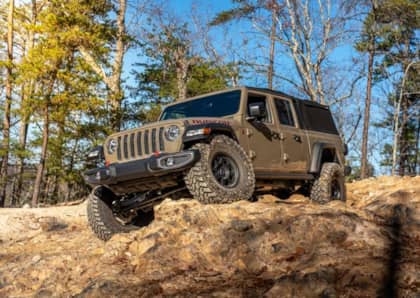Safari Rally Sports Car Builds: The Other, Other Off-Road Look For The Porsche 911 and Datsun Z
While the modern rally world may have been dominated by automakers like Subaru, Mitsubishi, and Audi, there are a number of other car companies that have fielded unlikely, yet successful entries in the dirt and gravel. These outside-the-box vehicles are showing up more and more often on both auction blocks and in the form of tribute builds from owners seeking to either immortalize, or modernize, this rugged aesthetic.

Specifically, enthusiasts have turned their attentions to the East African Safari Rally, a hardcore 4,000 mile event that has been held since the early 1950s. By the early '70s, car companies from Europe and Japan began to view the Safari Rally as the ultimate endurance test for their sports cars, and began to field specially-modified versions of their popular models under some of the most punishing conditions in the world of motorsports.

Thus was born the 'Safari' build, a unique subculture that celebrates these early rally stars by converting both classic and current coupes from brands as diverse as Porsche, Datsun, and Nissan to rally spec.
Lifted 911, Anyone?
Porsche's first entry in the Safari Rally came in 1971, when it brought a multi-car team made up of 911 coupes in STR trim. The ST stood for a combination of the S drivetrain with the T trim level (which focused on weight reduction), and the R stood for rally. In addition to their flat-six engines, these special Porsche 911s were also equipped with rear fender flares, a locking differential, a suspension lift that added 10 inches of ground clearance, skid plates, a roll bar, and all the lighting and spare tires needed to conquer the darkest of rally stages.

How tough was the Safari? A mere 30 percent of the vehicles that entered managed to cross the finish line that, and unsurprisingly one of the three 911 STRs was in their number (two more were retired, and two others had been used for practice).

Porsche would continue to build similar-to-Safari rally cars throughout the next 20 years, including a mix of two-wheel drive models (like the STR) and 4x4 designs that would later end up campaigning in other major dirt-and-desert events.

Today, Safari builds of Porsche 911s have become popular across almost every generation of the car. Companies like Atlanta, Georgia-based Keen Project (brainchild of racing driver Leh Keen) do a brisk business in building lifted (typically 4 inches or so), mud-splashing, rock-crunching versions of a car that is far better known for its prowess on the race track than for tackling off-road trails. Kelly-Moss Road and Race has also emerged as a premier builder of Safari 911s. Keen has cited the durability of the 911's construction as being a key aspect of why these vehicles can take SUV-levels of abuse and still paste a smile across the face of the owner.

While models from the '70s and '80s are most often given the Safari treatment, a growing number of late-'90s/early-2000s 996-generation Porsches are increasingly having the same modifications done. The automaker itself even built a factory 911 Safari concept in 2012.

Classic Keen Project turnkey cars can crest $100k at the end of the build, but it's possible to buy many of the components off-the-shelf and put together a Safari car of your own thanks to vendors like Elephant Racing, which provides a complete suspension package.
Datsun's Double-Victory
While Porsche might have been content to merely survive its first crack at the Safari Rally, one of its rivals managed to surpass it with its ambitions and post not one, but two overall victories at the event during roughly the same time period. Datsun's 240Z sports car, which was similar in size to the 911 STR, would take the Safari trophy in both 1971 and 1973.

Like the 911, the Z car had done particularly well in road course racing, but for rally competition it required significant modification. Power output was boosted by nearly 80 horses, the cars also featured a lifted and ruggedized suspension, and had massive auxiliary lighting affixed to the hood.

Datsun's Safari victory was particularly impressive as it was the first time an automaker had managed to finish on top of the podium in its first-ever try. The rally Z would go on to compete in a number of other events (such as the Monte Carlo rally) in the early part of the decade. The brand would also race the Bluebird sedan (sold in the U.S. as the 510) in the East African Safari Rally as well.

Datsun Safari tributes aren't quite as popular as their Porsche equivalents, but the inexpensive purchase price of the S30-generation Z car, plus their mechanical simplicity, makes them affordable for fans of thinking outside the box. A handful of modern Z owners have also made the Safari plunge, transforming current 370Zs into tarmac stage contenders.
More From Driving Line
- Love unconventional rally builds? This 1974 Ford Capri offers a muscle car alternative to traditional four-wheel drive competitors.







